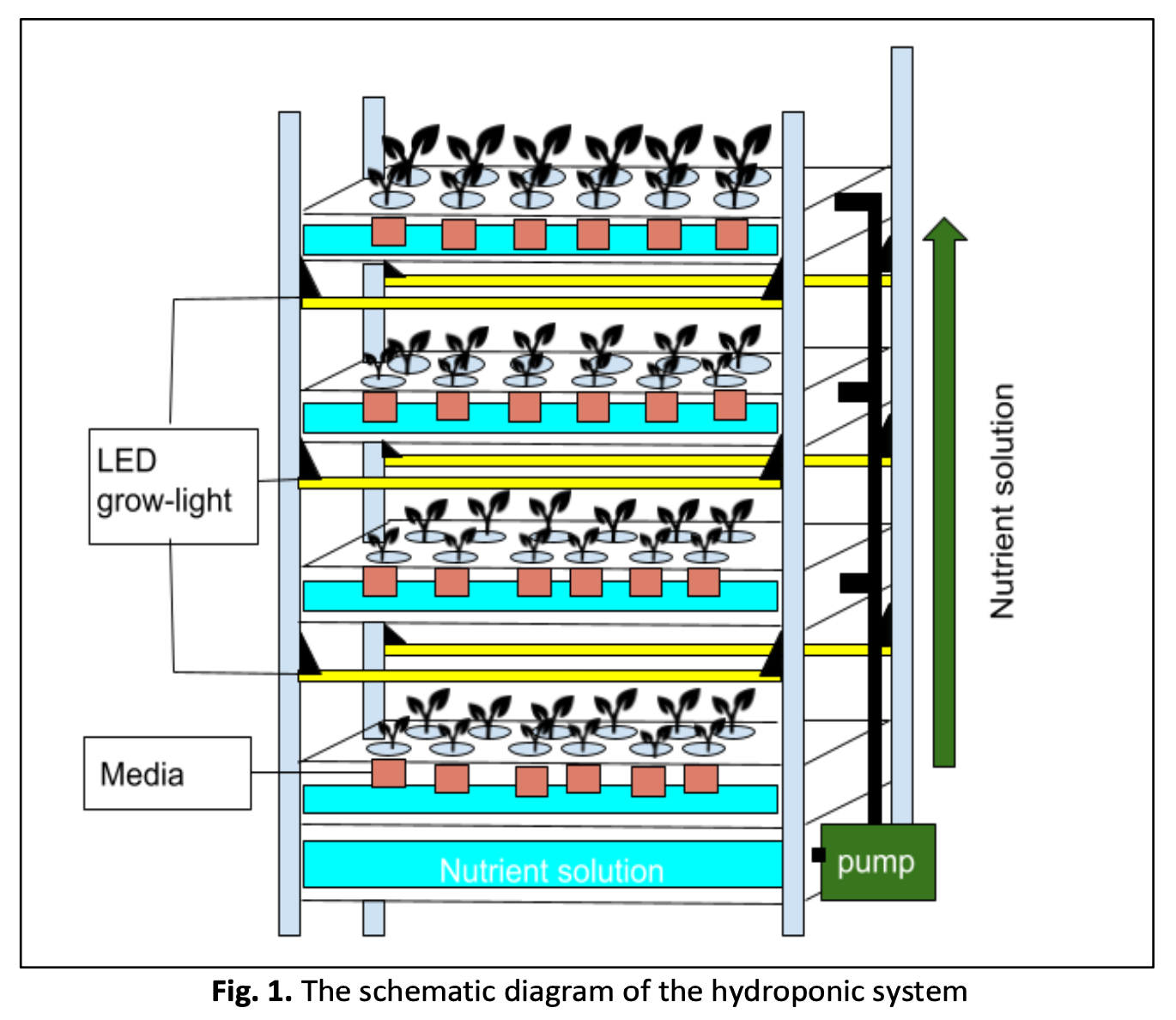The Effect of LED Grow Light Photoperiods on Indoor Hydroponic Lettuce Farming
DOI:
https://doi.org/10.37934/araset.32.1.368377Keywords:
Hydroponic, smart farming, Light Emitting Diodes (LEDs), grow lightsAbstract
With the recent advancement in Internet-of-Thing (IoT) technology, smart farming has rapidly evolved as an alternative solution to improve the effectiveness of plant growth and provide a better farming management. The implementation of smart farming involves the use of technology such as big data, the internet of things (IoT), and cloud servers. It is widely known as precision farming because the process of plant growth is managed by software and a sensor-monitoring system. The applications of smart farming are widely implemented in indoor farming especially hydroponic farming. Hydroponic indoor farming is a fast-growth sector due to the lack of land for agriculture caused by urbanization. For indoor farming, grow-light is a crucial factor for plant growth. The most effective and commonly used grow light is the Light Emitting Diodes (LED) grow light. The utilization of LED grows light offers many advantages over traditional grow lighting including less power consumption, generating lower heat and recyclable. Multiple research and investigations have been done on LED’s wavelength and intensities effect on the plants. However, the duration of exposure to LED grow light on the plants has the most significant influences on the growth rate of plants. In this project, an investigation into the photoperiods of the LED grow-light has been deployed for lettuce. The photoperiods are 14 hours of LED, 8 hours LED, combination of 8 hours sunlight and 3 hours LED, and compare with 8 hours sunlight. The presented results concluded that 14 hours of LED grow light duration on hydroponic vegetables has the most promising growth rate in indoor hydroponics lettuce farming.
Downloads




























